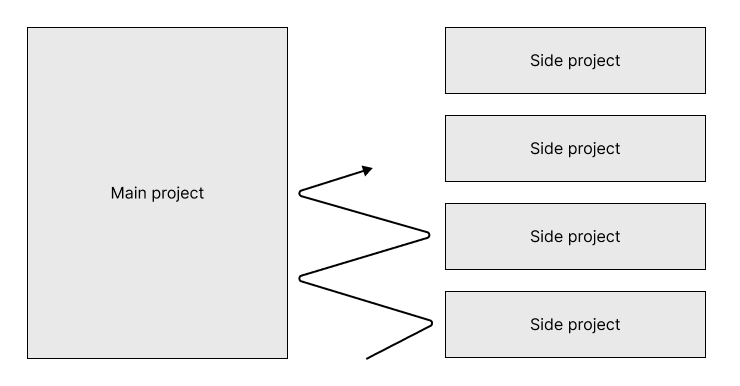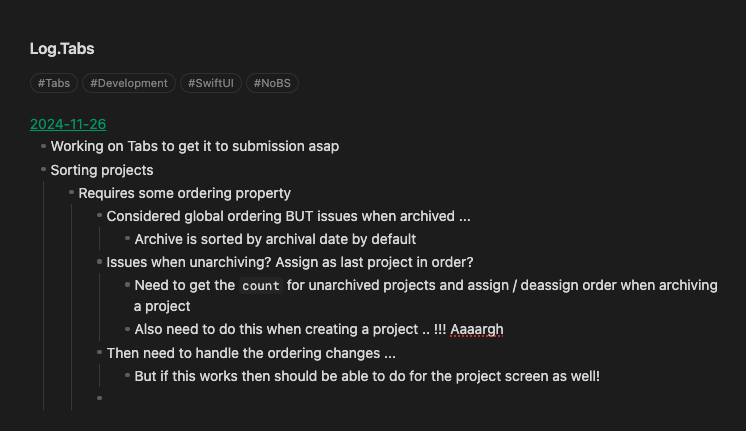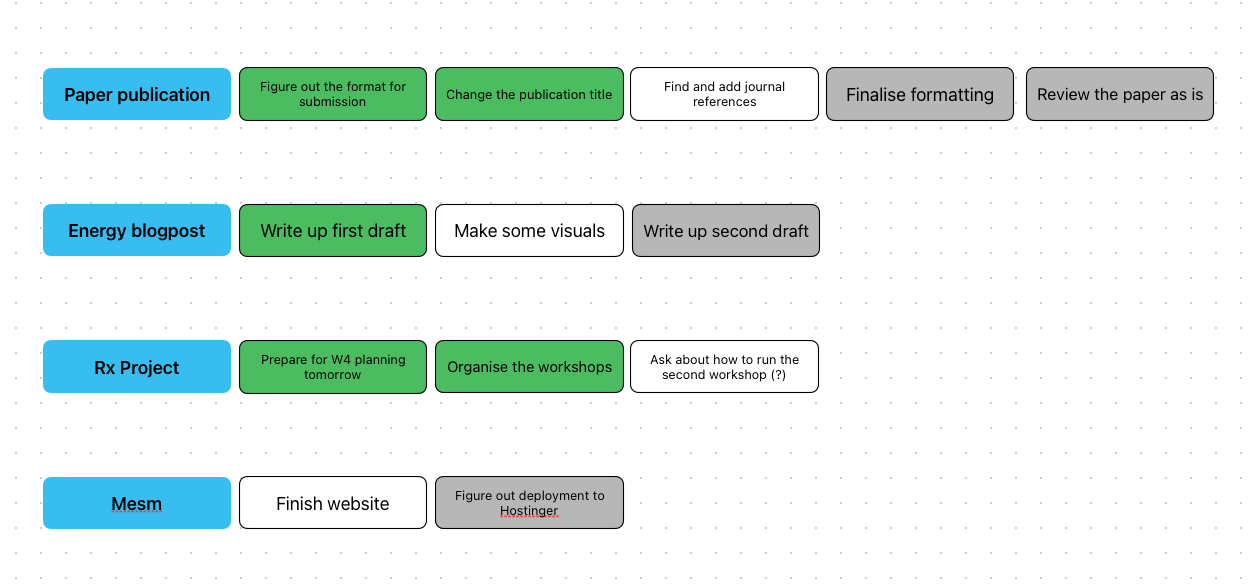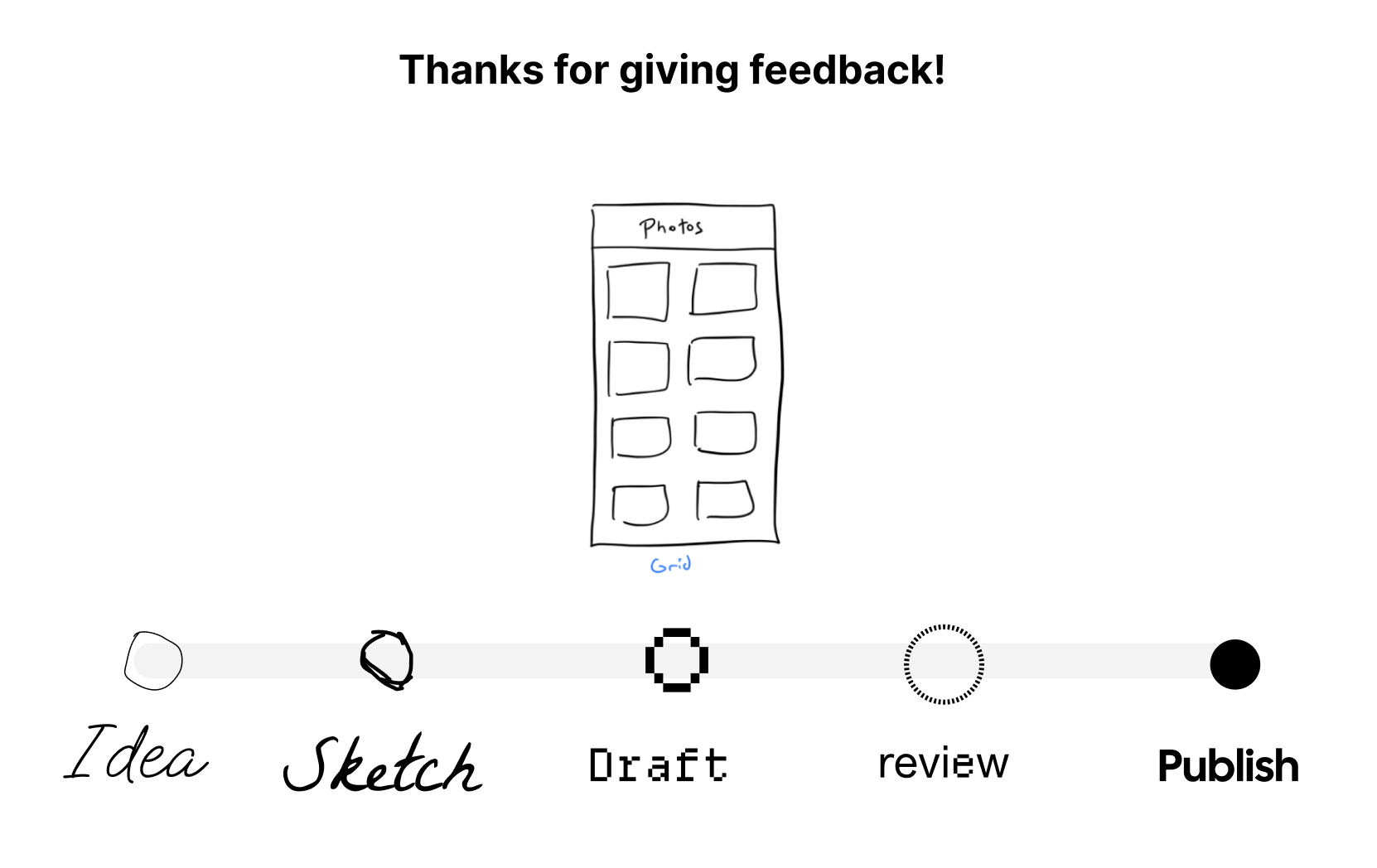Working on too many things?
I am currently working on 2 publications for my PhD, 2 apps for No Blank Space, an app and a website for Mesm, a game, and oh I’m writing a sci-fi novel at a slow and steady pace.
No matter how many times I just wish that I was working on one thing so I didn’t have the mess of numerous projects taking up headspace, I always find a way to add yet another…
… Because I really enjoy being able to switch between them, and care about each one.
… But also working on multiple projects at the same time can get real messy. You can end up juggling compulsive productivity, motivation, guilt, shame, peer pressure, and so many other emotions and feelings that get tied to or tied up in projects.
If this resonates with you - and you also find more and more projects to work on - this little post is about small learnings that I’ve gained working on these so far. I hope it sparks some ideas (or another project ;) )
Learning 1: Have a main project
I want to talk about the meme that is bouncing between projects constantly - especially prominent with game developers and other indie devs. Its no secret that starting a project is easier than finishing it - but I think its worth taking a step further on this.
Part of the reason I jump between projects is that I have many ideas that I want to get out of my head and onto paper/screen. Another part is that it helps avoid burnout from a single project by letting me explore branches of ideas freely.
… But these reasons don’t help to actually finish projects.
Having a designated main project creates focus and it builds discipline - and unfortunately these traits are necessary to get better at multitasking. I know it can be hard to pick one, but I know it benefits all of them when there’s a default.
 A bad copy of the image that inspired this learning.
A bad copy of the image that inspired this learning.
For every spree I have on a side project I must work on the main project. It creates a sense of progress and a sense of responsibility.
(Also, I find that it also helps when I talk to people about what I do - I have an answer in my main project and little nuggets as my side projects.)
Learning 2: Make a project log
This is an easy and a straightforward one, but bOY does it work wonders.
This part addresses two things:
- Making it easier to get back onto a project,
- Address the voice that tells you you’re not making progress,
When I’m working on something, I always open my project log in another window and make a new entry for the day (I use Obsidian). When I get stuck on a problem, I write a small note stating what it is and what possible decisions I’m considering. When I get a new idea I take a note of it in the project log. When I learn something new, I describe it briefly.
 An entry from my Tabs project log for reference.
An entry from my Tabs project log for reference.
When I come back to it later, not only do I know what I did last time, but I also remember how much work I put into it and how I felt doing it. It helps get back into it, and seeing a sequence of entries helps me feel like its a single project instead of distinct sporadic “work sessions”.
Obviously, progress is going to be slower for each than if you had one thing to work on. So its all about making progress visible.
Learning 3: Optimise for yourself and yourself alone
I work on projects based on what I’m currently excited about - and that means individually the projects do not get consistent attention. But I don’t want to rewrite my attitude, because they’re supposed to be fun things that I do because I want to. So productivity systems and consistency are out of the question.
So when I do find the time (and energy!) to work on a projects, I still need to decide on what to do next. For me, thats a struggle. A giant global todo list overwhelms me by making me decide between the 10 different features or bugs to work on. A kanban board lets me have multiple things in progress at a time - creating a whole other degree of freedom to fight with.
Funnily enough, this thought process is actually what spawned the idea for Tabs - my overwhelm friendly task manager. Its a really simple idea that I experimented with - to avoid the fatigue of deciding what to work on in a project, I made my todos a linear sequence.
 Where the Tabs experiment started - the sequential todo list
Where the Tabs experiment started - the sequential todo list
The idea is that if the tasks are already pre-sorted in a way that is inconvenient to reorder, the easiest thing to do is to work on the next thing. I first tried this out in a whiteboard app (Freeform for Mac, if you’re interested) and … instant hit with my brain. Its not revolutionary, but its so much less pressure and decision fatigue than seeing a giant list of todos and deciding what to work on from that.
I guess the generalisation here would be 1) identify the friction making work hard 2) avoid the friction.
Learning 4: Downtime is feedback time
I wish all of my projects were progressing faster - but its not possible to do so many things consistently at the same time. There’s people out there who have the discipline to do so - I’m sure - but I don’t want to sacrifice off-time for getting ahead x6.
So echoing the trends from above - how can downtime be reframed to be useful?
I find that for me - being intentional about downtime releases a lot of pressure to race to the finish line on each of them. Recognising that seeking out feedback is one of the greatest contributors to the energy of a project as well as just being good practice - I paired the already slow process of sharing my work with downtime.
When I know a project won’t be touched for a week or two, I send the current version out to a few people and over that period I simply listen and discuss it. Not only does this actually help progress the project, but I feel like it makes downtime useful and not something I should feel guilty about.
Note: I have a really small project coming up on how to prepare and ask for feedback, so stay tuned if you think you could use a few ideas… 💡
 Sneak peak of a little project on how to ask for feedback better…
Sneak peak of a little project on how to ask for feedback better…
Much like learning any skill, it sucks at the beginning, but its an incredibly rewarding to be able to work on things in parallel - there’s few things like when two projects collide and create new ideas or even a distinct third project. I do, however, think it is a mindset thing first and a capability thing second.
If you have any other learnings, I’d love to hear about them! I know people on the internet pass advice around like its a business card, but if there’s a story to advice I find it hits different. So if you have a story or learnings, lets grab a coffee:)
I don't write on a schedule, but if you want to be notified when something new does appear there's a signup below!